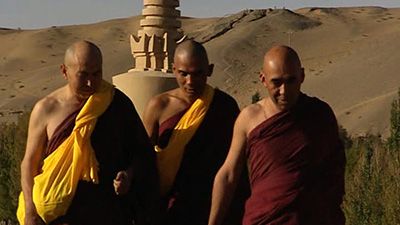Eurasia: The Conquest of the East
Eurasia: The Conquest of the East
Ghandhara the Renaissance of Buddhism (1x3)
Exibido em:: Jun 15, 2003
In India in the 6th century BC, Sakyamuni, "a wise man of the Sakya tribe", had been meditating under a tree when, suddenly, he was struck with the comprehension of all things. He became Buddha, meaning the « Illuminated ». His message, based on a pragmatic philosophy, taught how to free oneself from all needs in order to achieve illumination. After the death of the Enlightened One, his disciples – a few monks – began to spread his teachings all over India, from Ceylon to the Himalayan.
Fearing man’s penchant for idol worship, Buddha expressly forbade that his image should be represented in whatever form. Therefore, the Indian philosophers told his life story without ever showing in any form other than that of a simple lotus, a tree or a horse without a rider. The Buddhist missionaries began to build monasteries – they discovered that the local population was a mix of settlers from Greece, Egypt and Antioch as well as descendants from Alexander’s soldiers.
Influenced by Greek sculpture, Buddhism began to represent the Enlightened One in a Hellenised form. The Buddhist philosophy became less abstract and was better understood and henceforth widely adopted. Buddhism is a blend of spirit and culture which is unique in the history of mankind – it achieved the successful encounter of East and West.
- Estreou: Abr 2003
- Episódios: 8
- Seguidores: 0
- Finalizada
- Desconhecido
- Desconhecido
